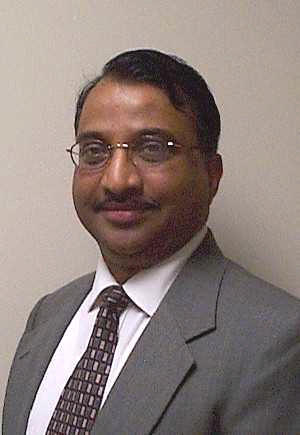![]()
![]()
![]()
![]()
![]()
![]()
![]()
![]()
![]()
![]()
![]()
![]()
![]()
![]()
Dr. Vijaya (VJ) Gopu

Dr. Vijaya (VJ) Gopu is the Professor and Chair of Civil and Environmental Engineering at Tulane University in New Orleans. Prior to joining Tulane University in 2003 fall semester, he was the Chair of Civil and Environmental Engineering at the University of Alabama in Huntsville where he was also the Associate Director for the University Transportation Center for Alabama.
Dr. Gopu served as the Program Director for the Structural Systems and Engineering in the Directorate of Engineering at the National Science Foundation from 1998-2001. He holds the Formosa Plastics Distinguished Professor Emeritus position at LSU where he served for 22 years. Dr. Gopu also served as a visiting professor at the Royal Institute of Technology in Stockholm, Sweden, and as a visiting scientist at Forintek in Vancouver, Canada. He received his MS and Ph.D. from Colorado State University in ’72 and ’75 respectively and worked as a structural consultant in Denver for three years before joining the faculty ranks in 1978.
He is a recipient of the International Wood Award from the Forest Products Society and several outstanding faculty awards from LSU and UAH. His areas of research interest include structural hazard mitigation, structural polymeric composites, heavy engineered timber structures, non-destructive evaluation of infrastructure systems, and building science.
He has over 150 technical publications and presentations to his credit and has supervised the research work of 50 masters and doctoral students. Dr. Gopu served as the principal investigator or co-principal investigator of over $3.5M of research projects funded by local, state, federal and international agencies. Dr. Gopu is active in several national and international technical committees, and has served as a member of several federal interagency working groups.
Designing for Security: Protecting Structures from Terrorism
The worldwide terrorist activities over the past decade and, in particular, the events of 9/11 have triggered considerable concern about our ability to protect buildings and their occupants from direct physical attacks. The military has been addressing the issue of protecting structures from explosive blasts since World War II and has developed a vast body of knowledge on blast-effects mitigation technology, very little of this knowledge has been applied in the civilian sector for obvious reasons. With the current concerns about the vulnerability of our civilian infrastructure to terrorist activities, it is critical for infrastructure design professionals to transfer this technology to civilian structures to the extent possible and fill the gaps in knowledge required for more effective implementation of these technologies. This paper discusses various issues related to ensuring the structural integrity from explosive blasts caused by terrorist activities.